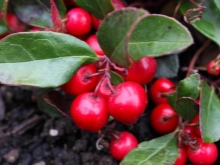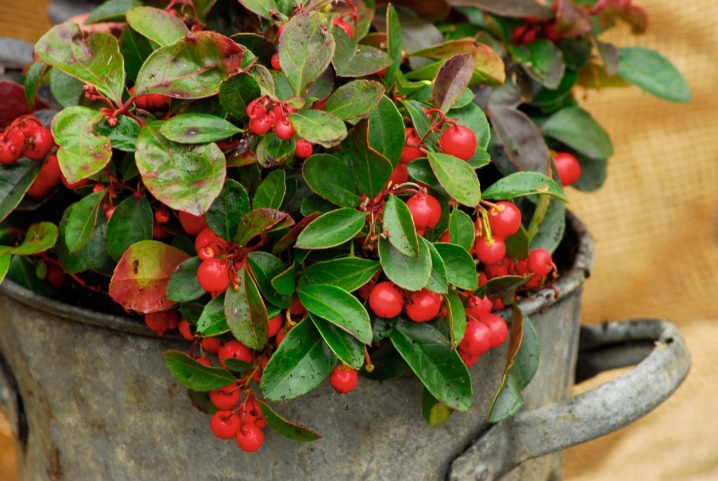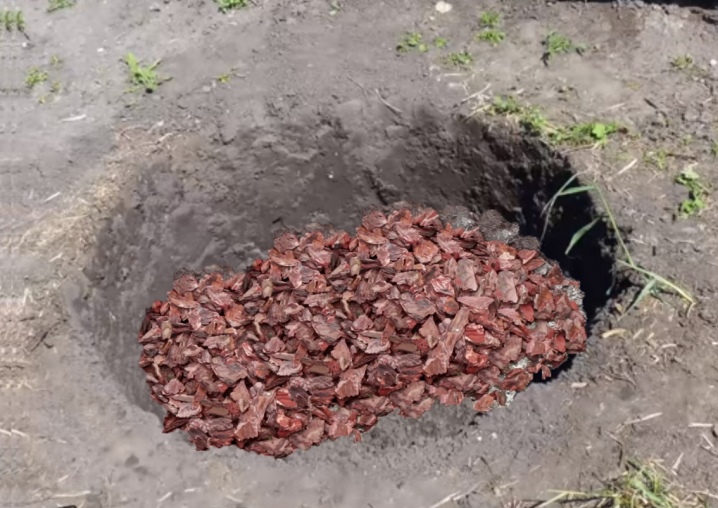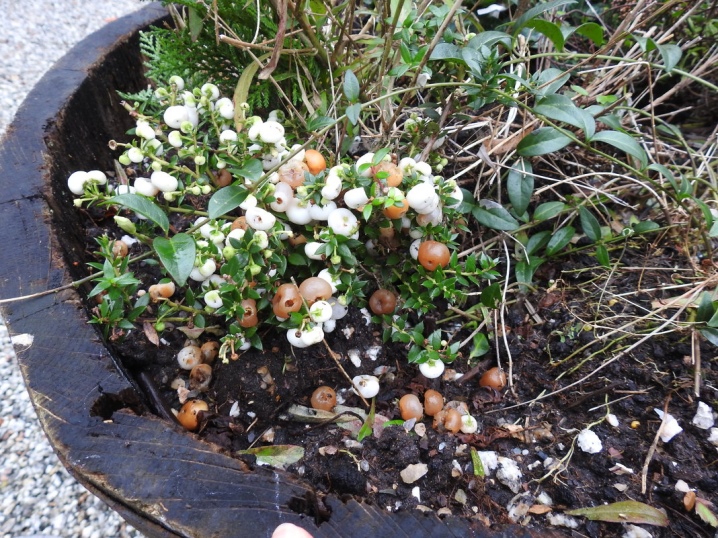Haulteria recumbent: description and rules of cultivation

There are a large number of ornamental shrubs that delight with their beauty and grace. But with all the variety of plants grown in large quantities by gardeners, it is worth expanding this list from time to time. A good choice from relatively rarely used crops is the recumbent - it deserves the most careful analysis.



Description
According to the generally accepted botanical classification, recumbent haulteria refers to:
- the heather family;
- order of heathers;
- dicotyledonous class;
- department of the flowering kingdom of plants.

In natural conditions this ornamental shrub inhabits North American forests... It is readily cultivated in other parts of the world. Plant height is relatively low (maximum 15 cm). It is characterized by the preservation of its green color all year round.

The leaves of the gault are in the shape of an ellipse or an oval. The length of the leaf can be from 2 to 5 cm, and the width is only 1-2 cm. The leaves of this plant have a unique smell. White flowers resemble bells in shape, they reach 0.5 cm in length.The diameter of the rich red fruit berries varies from 0.6 to 0.9 cm.
The essential oil obtained from the haulteria is turned into an ointment and used to combat acute rheumatism.

The haulteria tolerates severe cold quite well. Therefore, it can be safely bred in the open field in our country. An alternative name for the culture is the American wintergreen; in North America itself, it is called the eastern tea berry.

At low temperatures, the leaves acquire a characteristic crimson and become even more beautiful. The flowers of the haulteria are white and pinkish, rarely gather in inflorescences (grow singly) and droop.

The corolla of these flowers has 5 petals. Gaulteria is a good honey plant. Bloom spans July, August and September. After that, rather small scarlet berries are formed.
All parts of the plant smell good, and its leaves can be used to make medicinal teas.

The berries of the gault, according to some sources, are inedible, but they are not dangerous.
It is noted that birds, rodents and omnivores of the North American forest readily use these fruits (even bears eat them). At the same time, publications from the USA and Canada claim that berries can be eaten, but their taste is evaluated in different ways everywhere.

In some reviews, such fruits are compared with mint, other people have associations "with some kind of pills." In their pure form, few people eat them, but still, culinary use in jams, filling pies and pies, decorating cakes is quite possible.

Landing
Lying haulteria is classified as a plant of the 4th category of winter hardiness. Therefore, it can be safely grown in the Moscow region and neighboring regions. The culture can tolerate winter colds as low as -30 and even as low as -35 degrees Celsius. But if the frost is stronger, or the snow cover is insufficient, freezing is still likely. Problems can also arise from spring frosts.
Considering all this, it is necessary to plant a haulteria only in the spring months. Only under this condition will she have time to take root and adapt before the onset of frost.

Important: you cannot use fruiting plants for planting, which are readily sold by all nurseries in winter.
Relatively discreet green specimens can give a much better result. But even when using them, gardeners still have a lot of work to do.The point is that to call an American guest an unpretentious plant would be a sin against the truth. It requires humus-rich peat soils. The ground should be saturated with moisture and fairly cool. Acidic or slightly acidic soils are suitable, with a pH strictly from 5 to 6 units. At the same time, the cultivation of a haulteria in partial shade is allowed.

A very thick shade or prolonged drought will have a fatal effect on such a culture. If the soil is fairly damp, it is best to target areas with lacy shade created by deciduous or other evergreen crops. Gaulteria can get along with competing plants. The best soil for planting it is considered to be loose soil, the main part of which will be high-moor peat.
Be sure to take care of decent drainage, since this plant quickly dies when flooded and simply moisturized the roots.

In the absence of high-moor peat, the planting holes are filled with the combination:
- 2 shares of humus;
- 3 shares of coniferous litter;
- 1 share of coarse sand.

Places with dense clay or insufficiently saturated soil are improved. To do this, you first need to remove the top layer completely. The planting hole is then filled with the missing components. The depth of the planting pits varies from 30 to 40 cm. For drainage, pebble or broken brick is used.

Care
When grown in an open field with an alkaline reaction, the gault is watered with slightly acidic water. Put 15 g of citric or oxalic acid on 3 liters. You can also dilute 30 ml of vinegar with a concentration of 9% in 10 liters of water. In the spring, the plant is fed with a complex composition for rhododendrons. 20-30 g of mineral fertilizer are consumed per 1 sq. m.

At the beginning of each growing season, cut off too old dry shoots. On hot days, haulteria requires spraying and systematic watering. This will have to be done even with insufficient precipitation, even if the temperature is low.
Important: gaulteria, like other heathers, suffer greatly from excessive water hardness. Additional shelter for the winter is not required.

Reproduction methods
Seed breeding is used quite rarely - it is difficult and does not allow maintaining varietal advantages. Getting cut is much easier. Most often, this culture is propagated by pinning the layers to the ground. When about a year has passed, you can separate the rooted shoots.
Important: such seedlings should be watered thoroughly during the entire waiting period.

Usually, the cuttings are separated from the original plants in the fall. During the transplanting process, the roots should be affected as little as possible.
It is better to transplant the cuttings of the haulteria together with an earthen clod.

Cuttings are cut during the summer or autumn months, and the best material is the tops of partially lignified shoots... These parts of the plant are treated with root formation stimulants, after which they are rooted in coarse sand under a film under moderate light.

See below for more details.







































































































The comment was sent successfully.